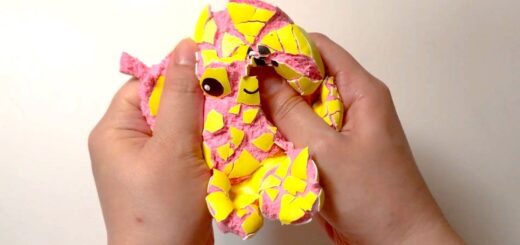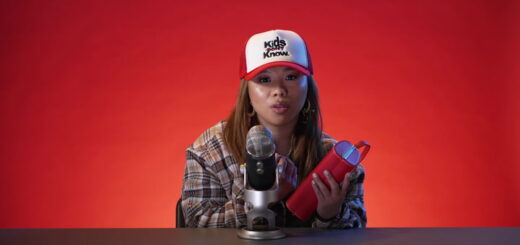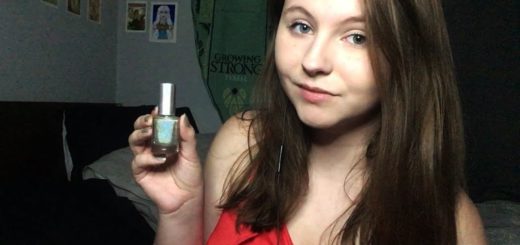Why Gooey Cheese May Calm Your Anxiety
[ad_1]
Feeling anxious? Just look at some melted cheese, offers Moe’s Southwest Grill, whose company just released “8 glorious, glossy, and gooey hours of queso being dripped, swirled, and dunked,” backed by “soothing spa audio.” The video speaks to some of the biggest media trends of the last few years: ASMR (autonomous sensory meridian response), oddly satisfying videos, food porn, and slow entertainment. And in today’s pandemic panicked environment, the cheesy offering may be just what people need.
Moe’s is not the first brand to capitalize on these novel Digital Age trends. While once a niche obsession, ASMR went mainstream in 2019 with Michelob Ultra’s 2019 Super Bowl commercial that features Zoe Kravitz slowly uncapping an effervescent beer while whispering to her audience. The year prior, cleaning company Kaboom launched an “oddly satisfying” campaign that highlights their products sounds and abilities to wipe away grime in the most pleasurable of fashions. When it comes to food porn, brands aren’t the followers but the leaders; close-up pan shots have been a long-time go-to for the fast food industry. And last year Lexus channeled the “slow entertainment” trend with its production of a 60,000 hour documentary on the Japanese tradition of takumi.
Many find these video interests confusing. But they make complete sense in the context of the Digital Age, and especially now in the midst of the COVID-19 pandemic.
A term coined in early 2010s, ASMR includes any video with enhanced audio that is used to titillate people’s senses. You can find over ten million ASMR videos on YouTube where people make soft sounds by whispering, turning book pages, chewing gum, nibbling food, or tapping their fingernails. For some viewers, these sounds elicit a physical tingling sensation that many find to be soothing. One survey of ASMR enthusiasts found that 98 percent see ASMR as an opportunity for relaxation. Eighty-two percent noted that they used ASMR to help them sleep, and 70 percent use ASMR to deal with stress. Indeed, these videos have been found to alter a viewer’s heart rate and increase skin conductance. Today, in this moment of uncertainty and danger, ASMR videos are of peak interest, globally, according to Google Trends.
Similar physical sensations are reported by those who watch “oddly satisfying” videos, which traditionally show people power-washing decks, folding laundry, mixing paint, and completing other innocuous tasks that many voyeurs say create a sensation of calm and satisfaction. Likewise, food porn elicits feelings of pleasure. Think: images and videos of unctuous brisket dripping translucent juices as a knife plows back and forth through the muscle; the liquid center of a molten chocolate cake slowly oozing as the sharp edge of a cold spoon cracks the cake’s spongy surface; caramel that percolates to form a stiff crust atop a luscious crème as it’s bruléed.
Meanwhile, over the last few years, people have been finding moments of Zen through “slow entertainment.” Take Netflix’s secret hit, Terrace House, as an example. The sloth-paced Japanese reality show puts six camera-ready Millennials into a house to live together. But unlike the drama-spiked American bedrocks like Real World, Terrace House’s episodes lull between everyday tasks to benign conversations. The episodes are “calm as Quaker meetings,” writes Troy Patterson for the New Yorker. If roommate debates aren’t your jam, stressed-out viewers can also quiet the mind with four-hour episodes of National Knitting Evening, six hours of chopping and burning of wood on National Firewood Night, or film of a seven-hour train ride from Bergen to Oslo, all hosted by the Norwegian Broadcasting Company. (In 2012, the Norwegian Broadcasting Company mounted a camera to a cruise boat that sailed down the coastline from Bergen to Kirkenes. They aired the entire journey—all 134 hours of it. At one point in the broadcast nearly half of Norway’s population was watching, according to media reports.) Folks are tuning in to, effectively, tune out.
In the last few years, long before “coronavirus” was a part of the global lexicon, anxiety rates had been rising sharply across all generations, with the greatest leap concentrated among the world’s youth. Starting in 2009, anxiety overtook depression as the top concern among college students, and the number of students experiencing anxiety has been steadily increasing since then. In its annual survey of students, the American College Health Association found a significant increase—from 50 percent in 2011 to 62 percent in 2016—in undergraduates reporting to have experienced “overwhelming anxiety” in the previous year.
Signs of the anxiety epidemic have been all around us. Prior to the pandemic, more and more people were already reportedly avoiding crowded concerts and busy airports and skipping trips abroad because of the fear that they’d be unsafe. Others have been forgoing parenthood as they cite things like “global instability” as one reason they don’t want to bring new life into this world.
In recent years, these frayed nerves have fueled a bustling self-care industry that some call the “Anxiety Economy.” There are now more than a thousand meditation apps, some of which have been downloaded by as many as ten million people. In 2017, the wellness industry raked in $3.7 trillion, with a growth rate faster than the global economy. Its burgeoning trends include meditation classes, floating tanks, infrared saunas, CBD supplements, ayahuasca “trips,” and destruction therapy. People are jumping on any bandwagon that promises tranquility, quiet, or some form of “toxin” banishment.
“Anxiety is starting to seem like a sociological condition,” observes New York Times reporter Alex Williams in an article titled “Prozac Nation Is Now the United States of Xanax.” This angst, Williams writes, is now “a shared cultural experience that feeds on alarmist CNN graphics and metastasizes through social media.” William wrote the article in 2017. If the Anxiety Economy was in-demand prior to COVID-19, just imagine what it will look like in the months and years to come.
It will be interesting to see how brands continue to respond to this volatile moment in human history. Many are making donations, offering interest-free loans, and promising that they’re “here for us”—all of which is important. But perhaps it’s also important to deliver small snippets like Moe’s eight hours of mindless, flow-inducing hours of swirling cheese, to, at the very least, encourage self-care. So go ahead: watch videos of egg yolks dripping, tile being scrubbed clean, a train meandering around the cliffs of Norway, or listen to a person’s gentle whispers. And make no excuses for doing so.
Sections of this article have been adapted from Eve Turow-Paul’s forthcoming book, Hungry: Avocado Toast, Instagram Influencers, and Our Search for Connection and Meaning, out June 9th.
[ad_2]
Source by [author_name]














